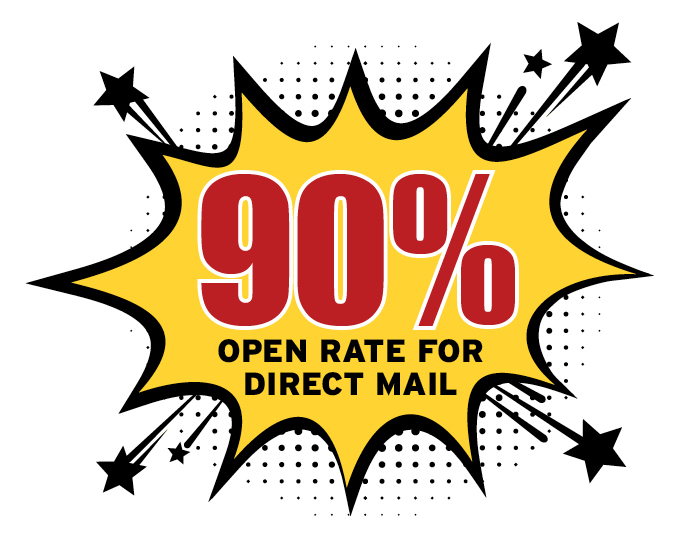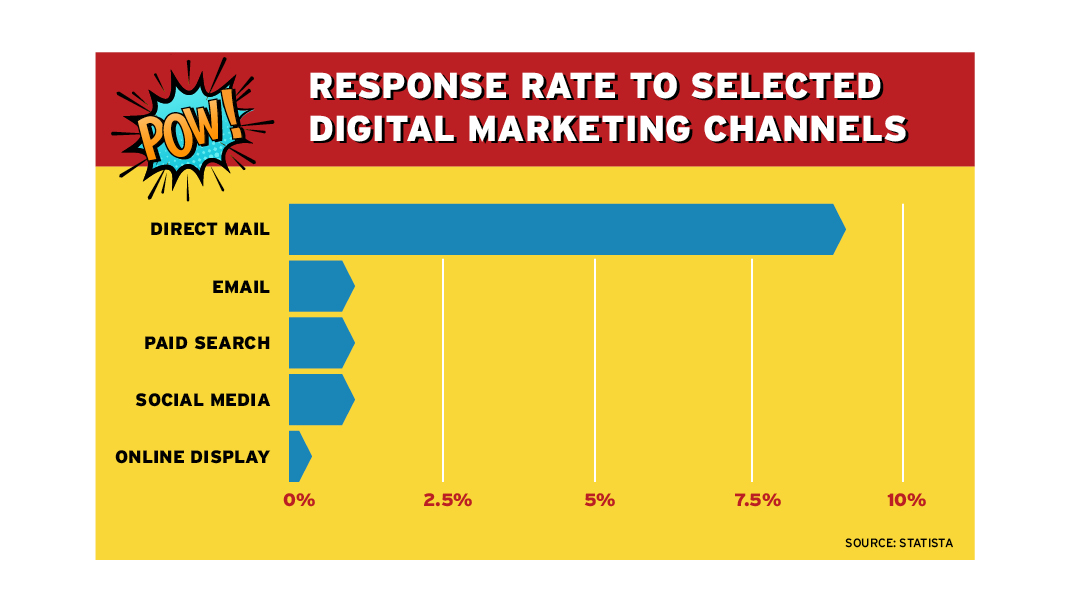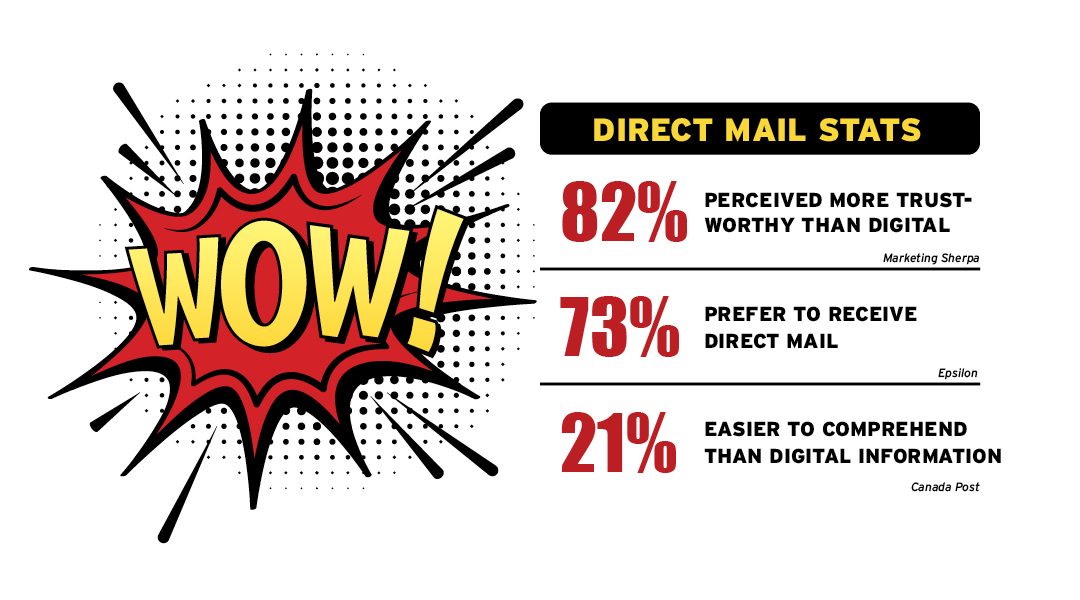Direct Mail: The Story of a Marketing Superhero
Sue Naylor Creative That Sells, Digital Direct Marketing, Direct Mail, Email Marketing, Marketing Analytics, Trends and POVI once was the powerhouse of marketing, garnering attention, capturing leads, and driving sales. Kids would wait for me by the mailbox at Christmas time hoping to page through the Sears Wish Book and circle what they wanted to see under the tree … I am direct mail.
As one of the oldest forms of marketing, printed direct mail was king for centuries. America was founded on direct mail. In 1681, William Penn published pamphlets which contributed to the immigration of Europeans to America. By 1888, Aaron Montgomery Ward was bringing up to $1 million in sales through his mail order catalogs. By the latter half of the 1900s, direct mail was universally used to not only sell goods, but also to market services from credit cards to health care plans.
I was more popular than ever; you would find me stuffed in your mailbox jammed in tightly with the others. I was one of many stacked on the kitchen counter among last week’s refrigerator art and a loaf of stale bread. I was packed with powerful messages but vulnerable to getting lost in the crowd.
Can there be too much of a good thing?
By the late 1990’s, a digital revolution was gaining traction. Companies began abandoning traditional print marketing for digital solutions. Digital shops specializing in advertising, distributed via mobile and the web, were popping up and replacing traditional agencies. Traditional advertising agencies were evolving into digital shops, trying to keep up with the trending paperless world. Initially it was a boon.

During the digital uprise, many people thought direct mail was a dying medium, but it couldn’t have been further from the truth … direct mail had, and still has, a 90% open rate!
By 1999, certain retailers that relied solely on direct mail tactics like catalogs, noticed a significant loss in revenue when they dialed back their mailings, opting for cheaper digital marketing. They were no longer profiting from their robust house list, as well as the anecdotal copy and compelling photography that had always led to impulse buys and add-on sales. Thus began the multichannel approach to marketing.
I have a new job now… and I no longer work alone. Though I am smaller and thinner than before, my lift is heavy. I must get my messages across quickly and shepherd my reader online to hear the rest of the story.
The evolution of marketing put direct mail in the driver’s seat
With modern production capabilities reducing cost and lead times, direct mail began making a comeback, whetting consumers’ appetite, piquing their interest, and driving them online. According to Forbes, after receiving direct mail, 92% of people targeted went online to learn more about the business, while 87% made online purchases.
Of all marketing channels, direct mail is a standout with a response rate that exceeds all others. However, when print and digital solutions join forces, they yield a 28% higher conversion rate than each channel alone.

For many, the digital revolution has led to digital fatigue, making direct mail more important than ever!
We spend our days working on laptops and attending zoom meetings, and our evenings catching up on social media, streaming content and gaming, so it’s no surprise that we spend half of our waking hours staring at a screen. By deleting unopened emails, blocking ads, and using spam block features, consumers have made it harder and harder to reach themselves digitally.
As a result, businesses have returned to the power of direct mail to stand out, break through the digital clutter, and emotionally connect with their audiences in a tactile, memorable way. With the prevalence of online scams and digital copycats, even millennials (82%!) find direct mail more trustworthy than digital communication.
Direct mail also has an edge over online communications when it comes to customization, and 70% of consumers find it more personal. Personalization and targeting customers by demographics and life events, such as the birth of a child or the approach of retirement, are valuable and trackable. These customized solutions explain why direct mail is the main form of advertising for 89% of financial firms and 65% of health care institutions, according to DMA Stat Book.

With inboxes full and mailboxes empty, direct mail is making a significant impact!
According to studies, 73% of Americans prefer to get direct mail and actually look forward to receiving physical mail. Consumers can sit back, relax, and read mail at their leisure — and, on average, keep most advertisements for 17 days. Studies have shown that printed direct mail is 21% easier to comprehend than digital materials, and brand recall is a whopping 75%, making direct mail the best tool in the box.
Today, you reach down into that nearly empty mailbox, and I stand out! You look at me as if I were a long-lost friend. My message is personalized just for you! Open me, read me, and put me on that highly coveted spot — the coffee table — for later … when you can page through me slowly, sip some tea, and ponder getting that new tchotchke that you don’t need but can’t resist.
I’m not dead yet. I’m back and better than ever … working hand in hand with all digital media to create a better customer experience. Together, we can handle it all!
If you need a little boost from this superhero or to learn more about our services (or what we have to say about direct mail), DMW is here to help with 40 years of award-winning experience in direct response marketing. Let’s talk. We’ll have our cape ready!